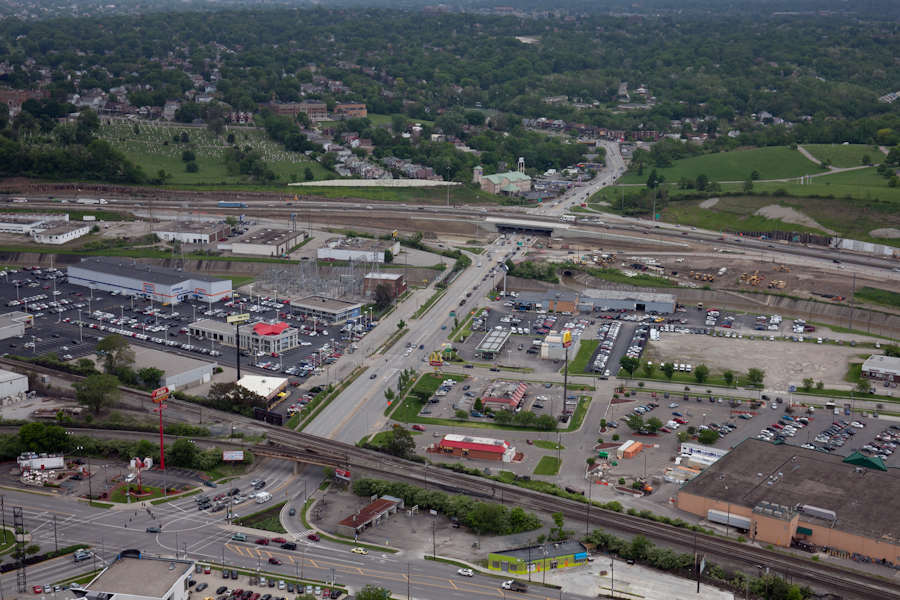In the last few years, evidence has shown the possibility for a revival of manufacturing within the United States. Recent trends have seen the “reshoring” of factories – with polls showing more and more companies considering the move – and the expansion and opening of new factories as well.
Much of this reindustrialization has occurred in the South and, for the most part, outside major urban areas. For far too long cities, especially northern cities in the Rust Belt, have written off an economy based on manufacturing as something from a bygone era, never to come back.

Once viable industrial neighborhoods like Spring Grove Village have made way for the proliferation of car dealerships and fast food restaurants. Could their future be something greater? Photograph by Jake Mecklenborg for UrbanCincy.
Cities from Cleveland to Flint have tried to reinvent themselves as a something like a Rust Belt version of Portland, Oregon, thus turning their back on any sort of industrial and economic policy in the hopes that gentrification and arts will revive their city.
While these sorts of developments have a place in economic policy for American cities, it is an unwise move for industrial cities such as Cincinnati to turn their backs on the opportunity to attract industry into the city once again.
Cincinnati is well-positioned to capitalize on a manufacturing renaissance in the nation. With incredible industrial infrastructure, an already heavy industrial sector in the region, and an incredible amount of vacant space, the city can create an economy where the bustling coffee shops and boutiques of Over-the-Rhine are only a short walk from the buzz of manufacturing (advanced and traditional alike) in Queensgate and the West End.
The days of entire cities being built upon industrial production have passed, that is without a doubt. But when urbanists discuss cities with mixed-use, diverse economies, manufacturing must be included.
These higher-than-average paying jobs could attract residents and revitalize neighborhoods. Through aggressive economic and industrial planning in the city, zoning that doesn’t ignore manufacturing, labor cooperation, and innovative education initiatives, Cincinnati could become a nationwide example of a city building a solid, diversified economic foundation on which to reclaim its storied past and prepare for a healthy future.
Editor’s Note: Jacob D. Fessler is a new member of the UrbanCincy team. He grew up in Northern Kentucky’s Erlanger community and went on to study International Relations and Latin American Studies at DePaul University in Chicago, and is currently studying International Affairs at the University of Cincinnati.
Jake will focus on urban economics and specifically examine policies that impact our region’s industrial – and thus economic – competitiveness. How and what can Cincinnati do to inject new life and jobs into the Mill Creek Valley? How should our community leaders be looking to improve earnings and the financial health and stability of our residents? These are the kinds of questions he will be exploring. Please join us in welcoming Jake to our team!
